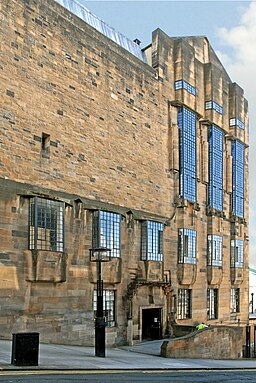What’s on : Cafe-scientifique
Event Information
“A Symphony in Stone”: documentary film on Glasgow Architecture
Narrated by Bill Paterson
Join us to watch this documentary film on the development of Glasgow’s extraordinary architecture and cityscape from the ecclesiastical city of the Middle Ages to the brilliance of the 1920s Glasgow Style.
With thanks to our Friends at the Royal Glasgow Philosophical Society.
We are holding this Cafe Scientifique session on SUNDAY 24th September from 7pm in the “Den”, Mickelgate Social, 148-150 Mickelgate on the corner of Bar Lane, York. Nearest car park at Nunnery lane and the venue is a short walk from York Station or Rougier Street buses.
Buy a drink at the ground floor bar, (beer, coffee, fruit juice, wine and spirits all available) and then come down the stairs to the basement “Den” where there are tables, chairs and sofas and a sound system and large screen. Apologies that there is no lift.
Image credit: “Glasgow School of Art” by Jean-Pierre Dalbéra from Paris, France, CC BY 2.0 <https://creativecommons.org/licenses/by/2.0>, via Wikimedia Commons
Member’s report
Tony Burton from the Royal Glasgow Philosophical Society presented his film on Glasgow’s architecture in Café Sci’s new venue known as ‘The Den’ at 148-50 Micklegate. Entitled ‘A Symphony in Stone’, the film was narrated by the Glaswegian actor, Bill Patterson with learned interventions by Gavin Stamp to whom the film is dedicated.
Shot in part from the air, it was easy to see the grid-like plan of the city as well the many green areas, ranging from pocket sized plots to the magisterial park around Kelvingrove Museum. The film emphasised the beauty of the two different but complimentary shades of sandstone ranging from golden yellow to burnt orange of which many of Glasgow’s tenements were built. Formerly blackened owing to Glasgow’s industrial past as the second city of the Empire, Glasgow now appears as it was originally intended and we were able to admire the classical architecture of Alexander ‘Greek’ Thompson – as well as the lesser known but equally influential John James Burnet – alongside the art deco and art nouveau work of Charles Rennie Macintosh, Herbert McNair and the Macdonald Sisters.
Dorothy Nott

